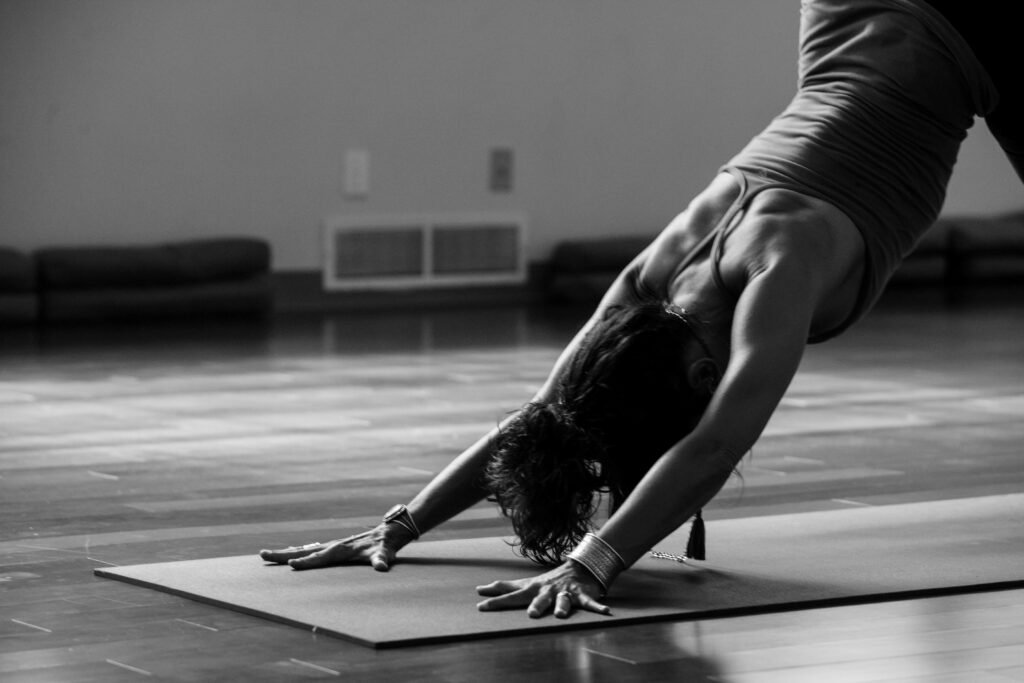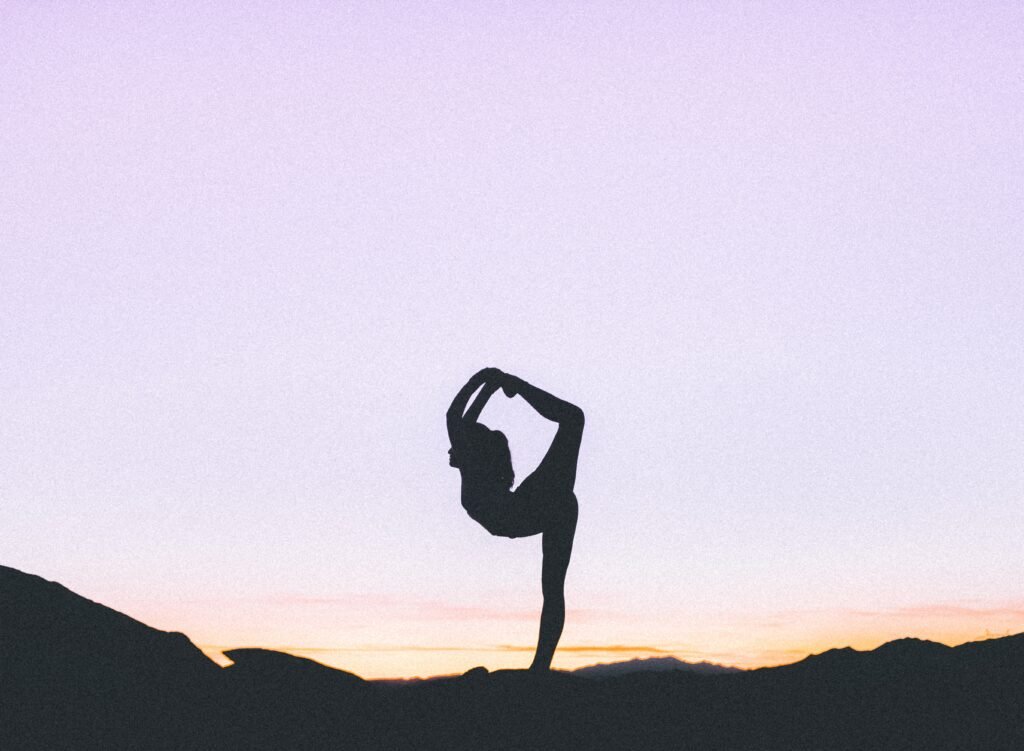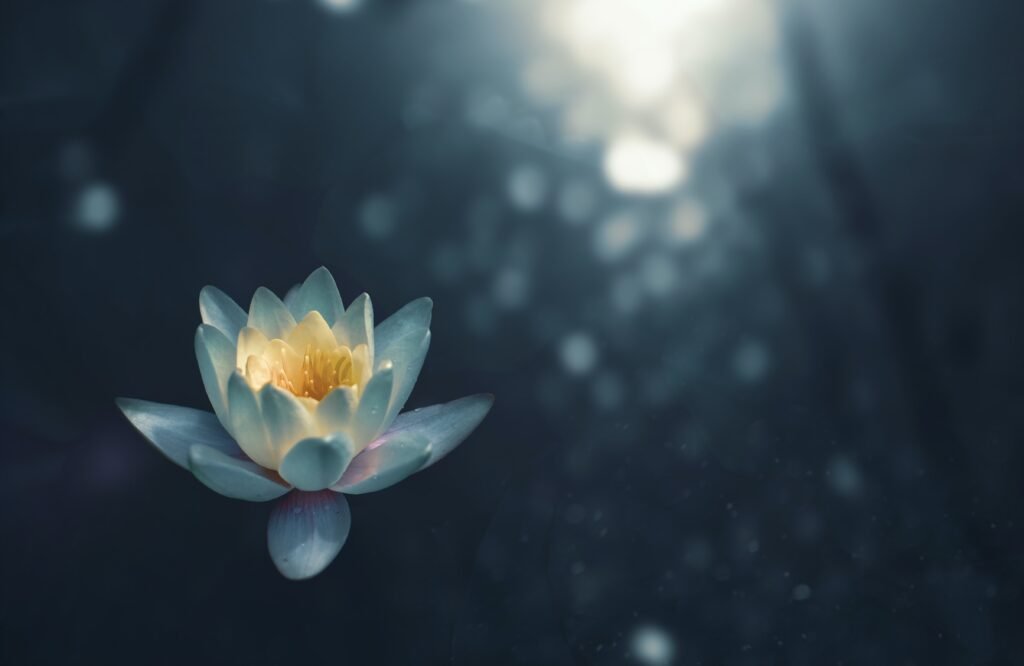
If you’ve ever wondered what all the hype around yoga is about, then this Beginner’s Guide to Yoga Poses is here to serve as your ultimate introduction. Whether you’re a complete novice or have dabbled in a few classes before, this guide will provide you with a concise overview of the essential poses you need to know to kickstart your yoga journey. From the grounding Mountain Pose to the energizing Warrior 2, each pose is explained in a friendly and accessible manner, ensuring that you feel confident and comfortable as you flow from one pose to the next. So, roll out your mat, take a deep breath, and let’s dive into the world of yoga poses together!
Find more product like these on Amazon!
Equipment Needed
To get started with your yoga practice, you won’t need much equipment. In fact, all you really need is a yoga mat. A yoga mat provides cushioning for your body and helps prevent slipping during poses. It also defines your personal space and creates a dedicated area for your practice. If you have hard floors, you may also want to consider getting a yoga blanket or bolster for added comfort and support. These props can be particularly helpful for seated or reclining poses.
Preparing for Practice
Setting up a space
Before you begin your yoga practice, it’s essential to set up a dedicated space where you can practice without any distractions. Find a quiet corner or room in your home where you can roll out your mat and have enough space to move freely. Make sure the area is clean and tidy, creating a calming environment for your practice. You may also want to consider adding some soft lighting or burning incense to enhance the ambiance and create a peaceful atmosphere.
Choosing comfortable clothing
When it comes to yoga, comfort is key. Choose clothing that allows you to move freely and doesn’t restrict your range of motion. Opt for breathable and stretchy materials, such as leggings or yoga pants, and a comfortable top or tank. Avoid wearing clothing with zippers or buttons that may dig into your skin during certain poses. Don’t forget to remove any jewelry or accessories that may get in the way or cause discomfort during your practice.
Gathering props (optional)
While props are not necessary for a yoga practice, they can be beneficial, especially for beginners. Props such as blocks, straps, and blankets can help you modify poses and make them more accessible. Blocks can be used for support or to bring the ground closer to you, while straps can assist in stretching and deepening your practice. Blankets can provide extra padding and support for seated or reclining poses. If you’re unsure about whether or not to use props, consult with a yoga instructor who can guide you based on your specific needs.

This image is property of images.unsplash.com.
Basic Yoga Poses
Now that you have your space set up and you’re dressed comfortably, it’s time to dive into some basic yoga poses. These poses are beginner-friendly, providing a strong foundation for your yoga journey.
Mountain Pose (Tadasana)
Stand tall with your feet hip-width apart, spreading your toes to create a stable base. Engage your core, lengthen your spine, and roll your shoulders back and down. Allow your arms to relax by your sides, with your palms facing forward. Stay grounded as you find balance and stability in this pose. Mountain pose is a great way to start your practice, connecting with your breath and finding a sense of grounding and presence.
Child’s Pose (Balasana)
From a kneeling position, bring your big toes to touch and widen your knees to create space for your torso to come between them. Walk your hands forward, grounding your forehead or the side of your face on the mat. Allow your hips to sink back towards your heels, feeling a gentle stretch in your back, hips, and shoulders. Take deep breaths in this restful and nurturing pose, surrendering any tension or stress.
Downward Facing Dog (Adho Mukha Svanasana)
From a tabletop position, tuck your toes under and lift your hips up towards the ceiling, creating an inverted V shape with your body. Press firmly through your hands and feet, lengthening your spine and engaging your core. Feel the stretch in the backs of your legs and shoulders as you relax your head and neck. Downward facing dog is an excellent pose for stretching and strengthening the entire body, while also calming the mind.
Warrior I (Virabhadrasana I)
From a standing position, step your left foot back and turn it out at a 45-degree angle. Bend your right knee, ensuring it’s stacked directly over your ankle, and square your hips towards the front of the mat. Extend your arms overhead, reaching towards the sky, and find stability in your legs as you sink deeper into the lunge. Warrior I builds strength, stability, and focus, empowering you to feel grounded and powerful.
Tree Pose (Vrksasana)
Stand tall with your feet hip-width apart, placing your weight evenly on both feet. Shift your weight onto your left foot and bring the sole of your right foot to rest on your left ankle, calf, or inner thigh. Find a focal point to gaze at and bring your hands to your heart center. You can keep your hands at your heart or reach them overhead, like the branches of a tree. Tree pose enhances balance and concentration, while also promoting a sense of inner calm and stability.
Cat-Cow Pose (Marjaryasana-Bitilasana)
Begin on all fours, with your hands aligned under your shoulders and your knees under your hips. As you inhale, arch your back, dropping your belly towards the floor and lifting your chest and tailbone towards the ceiling (cow pose). As you exhale, round your back, tucking your chin towards your chest and drawing your belly button towards your spine (cat pose). Flow smoothly between these two poses, syncing your breath with your movement. Cat-cow pose gently warms up and awakens the spine, preparing you for further exploration.
Bridge Pose (Setu Bandhasana)
Lie on your back with your knees bent and feet flat on the mat, hip-width apart. Press your feet into the ground as you lift your hips towards the ceiling, creating a bridge shape with your body. Interlace your fingers under your hips, rolling your shoulders back and down. Engage your glutes and core to support the lift, while maintaining a relaxed neck and jaw. Bridge pose strengthens the back, glutes, and legs, while also opening the chest and shoulders.
Corpse Pose (Savasana)
Lie on your back with your legs extended and your arms relaxed by your sides, palms facing up. Close your eyes, take deep breaths, and allow your entire body to release any tension. Let go of any thoughts or distractions and surrender to the present moment. Stay in this pose for a few minutes, using it as an opportunity to rest and integrate the benefits of your practice. Savasana is the final pose of every yoga practice, offering deep relaxation and rejuvenation for the body and mind.
Standing Poses
Standing poses offer strength, stability, and a sense of groundedness. They build strength in the legs, core, and hips, and work to improve balance and focus.
Chair Pose (Utkatasana)
Stand tall with your feet together, toes pointing forward. Inhale as you raise your arms overhead, reaching towards the sky. As you exhale, bend your knees and sit back as if you were sitting in an imaginary chair. Engage your core, keep your knees aligned with your toes, and imagine pressing your weight into your heels. Chair pose builds strength in the legs, glutes, and core, while also activating the entire body.
Triangle Pose (Trikonasana)
Start in a standing position with your feet about 3-4 feet apart. Turn your right foot out at a 90-degree angle and your left foot slightly inwards. Extend your arms to the sides, parallel to the floor. Inhale and reach your right arm forward, tilting your torso to the right. Exhale and engage your core as you hinge at the hip, bringing your right hand down to your shin, ankle, or the floor. Extend your left arm vertically towards the ceiling, creating a straight line from your left hand to your left heel. Triangle pose stretches the hips, hamstrings, and side body, while also improving balance and stability.
Warrior II (Virabhadrasana II)
From a standing position, step your left foot back and turn it out at a 90-degree angle. Align your left heel with the arch of your right foot. Extend your arms out to the sides, parallel to the floor, with your palms facing down. Bend your right knee, ensuring it’s stacked directly over your ankle, and gaze over your right fingertips. Warrior II strengthens the legs, opens the hips, and cultivates focus and determination.

This image is property of images.unsplash.com.
Seated Poses
Seated poses are perfect for grounding, stretching, and finding stillness. They are great for opening the hips, increasing flexibility, and practicing mindfulness.
Easy Pose (Sukhasana)
Sit on your mat with your legs crossed, bringing your knees towards the floor. Rest your hands on your knees or thighs, palms facing up or down. Lengthen your spine, relax your shoulders, and close your eyes. Easy pose is a comfortable seated position that promotes a relaxed and grounded state of being. It is often used for meditation and breathing exercises.
Seated Forward Bend (Paschimottanasana)
Start in a seated position with your legs extended in front of you. Flex your feet, press your sit bones into the mat, and elongate your spine. Inhale deeply, then exhale as you fold forward from your hips, reaching towards your feet. You may find it helpful to place a strap around your feet and hold onto the ends for support. Allow your upper body to relax and surrender to the stretch in your hamstrings and back. Seated forward bend stretches the entire back body, hamstrings, and calves, while also fostering a sense of surrender and release.
Bound Angle Pose (Baddha Konasana)
Sit on your mat with your legs extended in front of you. Bend your knees and bring the soles of your feet together, allowing your knees to fall open to the sides. Gently hold onto your feet or ankles, resting your hands on your shins. Inhale as you lengthen your spine, then exhale as you fold forward, keeping your back flat. You can use props like blocks or blankets to support your forearms or forehead if needed. Bound angle pose opens the hips, groin, and inner thighs, while also stimulating the abdominal organs and promoting relaxation.
Supine Poses
Supine poses involve lying on your back, offering a gentle and relaxing way to release tension and stretch the body.
Legs-Up-The-Wall Pose (Viparita Karani)
Find a near wall or door and lie on your back, placing your legs up the wall. Allow your arms to rest by your sides, with your palms facing up. Close your eyes and relax into the pose, letting gravity assist in the release of tension. Legs-up-the-wall pose promotes relaxation, reduces swelling in the legs, and encourages circulation and lymphatic flow.
Reclining Bound Angle Pose (Supta Baddha Konasana)
Lie on your back with your knees bent and feet flat on the floor. Bring the soles of your feet together, allowing your knees to fall open towards the sides. Gently recline your body back, using your elbows for support if needed. Rest your arms by your sides or place your hands on your belly or chest. Close your eyes and take deep breaths, surrendering into the stretch and finding relaxation. Reclining bound angle pose stimulates the hips, opens the chest and shoulders, and calms the nervous system.

This image is property of images.unsplash.com.
Backbends
Backbends are invigorating poses that open the chest, stretch the front body, and energize the entire system.
Camel Pose (Ustrasana)
Begin in a kneeling position, with your knees hip-width apart and your feet flexed. Place your hands on your lower back, fingers pointing downward. Shift your weight onto your knees and engage your core as you lean back, pressing your hips forward. Release your hands and reach for your heels, or place your fingertips on the mat for support. Lift your chest towards the sky, opening your heart and throat. Camel pose stretches the chest, shoulders, and thighs, while also increasing flexibility and promoting emotional release.
Bridge Pose (Setu Bandha Sarvangasana)
Lie on your back with your knees bent and feet flat on the mat, hip-width apart. Press your feet into the ground as you lift your hips towards the ceiling, creating a bridge shape with your body. Interlace your fingers under your hips, rolling your shoulders back and down. Engage your glutes and core to support the lift, while maintaining a relaxed neck and jaw. Bridge pose strengthens the back, glutes, and legs, while also opening the chest and shoulders.
Balancing Poses
Balancing poses challenge your stability and focus, requiring concentration and a strong mind-body connection.
Extended Hand-To-Big-Toe Pose (Utthita Hasta Padangusthasana)
Stand tall with your feet together, grounding your left foot into the mat. Lift your right leg up, bending your knee and grasping your big toe with your right hand. Slowly extend your right leg forward, finding your balance. If needed, you can use a strap around the ball of your foot to help with stability. Keep your core engaged and your gaze steady, finding strength and focus in this balancing pose. Extended hand-to-big-toe pose improves balance, strengthens the legs, and increases flexibility.
Eagle Pose (Garudasana)
Stand tall with your feet together, arms by your sides. Bend your knees slightly and balance on your left foot. Cross your right thigh over your left thigh, hooking your right foot behind your left calf if possible. Extend your arms forward and cross your left arm over your right arm, bending your elbows and wrapping your forearms together. Keep your gaze focused and find stability as you engage your core and slightly sink into the pose. Eagle pose enhances balance, improves concentration, and stretches the shoulders and upper back.
Twisting Poses
Twisting poses detoxify the body, improve digestion, and release tension in the spine.
Revolved Chair Pose (Parivrtta Utkatasana)
Begin in chair pose, standing tall with your feet together and knees bent. Bring your hands to your heart center. Inhale deeply, then exhale as you twist your torso to the right, bringing your left elbow to the outside of your right thigh. Press your palms together, using your arms to deepen the twist. Keep your hips squared forward and your gaze over your right shoulder. Revolved chair pose strengthens the legs, stretches the spine, and aids in digestion.
Supine Spinal Twist (Supta Matsyendrasana)
Lie on your back with your arms extended out to the sides, forming a T shape. Bend your knees and bring them towards your chest. Slowly lower both knees to the right side of your body, keeping your shoulders grounded on the mat. Gently turn your head to the left, deepening the twist. Breathe deeply into your belly and hold the pose for a few breaths before repeating on the other side. Supine spinal twist stretches the spine, opens the chest, and releases tension in the lower back.
Inversions
Inversions are poses where the head is below the heart, offering a unique perspective and a refreshing change in blood flow.
Headstand (Sirsasana)
Begin in a kneeling position, interlacing your fingers and placing them on the ground, creating a stable base. Place the top of your head on the mat, with the back of your head resting in your hands. Straighten your legs and walk your feet towards your torso, lifting one leg at a time towards the sky. Find balance by engaging your core and pressing through your forearms and shoulders. Headstand strengthens the arms, shoulders, and core, while also improving focus and promoting clarity of mind.
Shoulderstand (Sarvangasana)
Start by lying flat on your back, with your arms by your sides and palms facing down. Bend your knees and bring your feet towards your glutes. Lift your hips off the ground and support your lower back with your hands. Straighten your legs and extend them towards the ceiling, keeping your torso perpendicular to the ground. Engage your core and press through your elbows and shoulders to support your body weight. Shoulderstand stimulates the thyroid gland, improves circulation, and relieves tension in the neck and shoulders.
Legs-Up-The-Wall Pose (Viparita Karani)
Find a near wall or door and lie on your back, placing your legs up the wall. Allow your arms to rest by your sides, with your palms facing up. Close your eyes and relax into the pose, letting gravity assist in the release of tension. Legs-up-the-wall pose promotes relaxation, reduces swelling in the legs, and encourages circulation and lymphatic flow.
By incorporating these basic yoga poses into your practice, you’ll be well on your way to building strength, flexibility, and mindfulness. Remember to listen to your body and make modifications as needed. With time and consistent practice, you’ll not only develop physical benefits but also gain a deeper connection to yourself and find a sense of peace and balance in your everyday life. Enjoy your journey on the mat!

